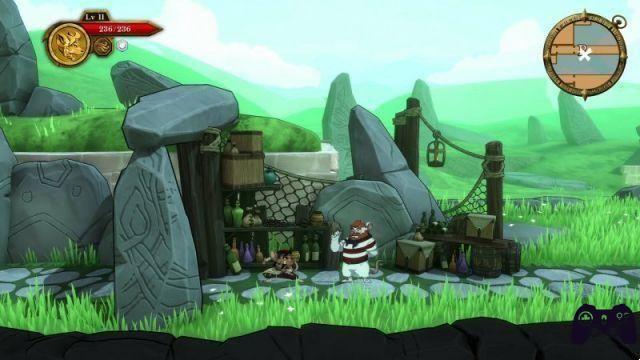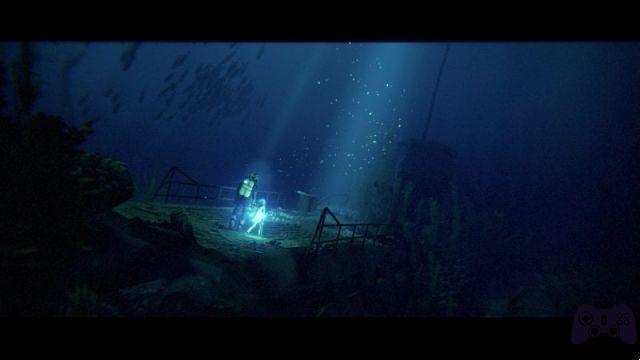There are games that leave their mark and that it is important to recover to also teach the new generations who we were and how we got here: it is a concept that applies both to the great titles, to the triple A titles that always sell, and to those minor ones, the underdogs unknown to most who in one way or another have meant something to someone. All ideas have dignity. Nippon Ichi He knows it well and perhaps that is why he continues a kind of self-celebration campaign that with this compilation seems to have reached the end of the line. Not everyone knows the series. Rhapsody It has basically cleaned up that peculiar style that has distinguished the Japanese developer's titles for twenty years.
And so, NIS finally decided to localize Rhapsody II and Rhapsody III as well, including them in one package. Unfortunately, the first game in the series is missing, already available in another compilation, Prinny Presents NIS Classics Volume 3: an unfortunate choice, which will be worth discussing later in our Rhapsody: Marl Kingdom Chronicles Review, a package that might interest lovers of old-school Japanese role-playing games. Let's see together why.
Stories of princesses and puppets

Premise: It is not strictly necessary to have played the first Rhapsody to understand the story and characters of the Marl Kingdom Chronicles compilation, but our advice is still to recover the first game in the Rhapsody series as a standalone title on Steam or via Prinny presents volume 3 of NIS Classics on Nintendo Switch, which also includes La Pucelle Ragnarok, a strategic role-playing game that in some ways also acts as a sequel to Rhapsody 3, being set in the same world and having a descendant of the protagonists of Rhapsody 2 in the cast .
If you are a little confused at this point, let's recap: Rhapsody 1 is not necessary, but above all it helps to better understand Rhapsody 3. The second Rhapsody, in fact, has as its protagonist the princesa kururu, who we discover is Cornet's daughter, that is, the protagonist of the first game: at the age of twelve, the princess runs away from home in search of true love like her mother, and ends up involved in a dispute between two families of witches competing for a powerful artifact.
If Rhapsody 2 represents what we would today call a "soft reboot", that is, a narrative reboot that connects solidly but far from decisively with the previous title, Rhapsody 3 is an entirely different matter. The third episode of the series is actually a collection of short stories Focused on several characters known in previous titles: the five chapters that make up the narrative serve to consolidate the imaginary and the different protagonists, opening small glimpses into several crucial moments in the ancient history of loam kingdom. The various subplots then converge in a rather absurd final chapter that is reminiscent in many ways of the conclusion of another JRPG from the 90s that Square Enix recently revived with a good remake, Live A Live.
You might think that Rhapsody is a story so complicated and macroscopic that it even needs some kind of appendix in the third iteration, and that there is an epic battle between the forces of good and evil that even has its roots in the past, but the La The truth is that Rhapsody is among the JRPG frivolous that Nippon Ichi has developed, and it is precisely for that reason - for the desire, that is, to tell true fairy tales - that the Japanese company has made one of its bravest bets, choosing as a reference genre... new boom in musicals.

At the beginning of Rhapsody II: Ballad of the Little Princess, the protagonist Kururu goes on an adventure together with her bodyguard, the knight Randy. On the road leading away from the palace, the two begin singing and dancing along with a group of NPCs improvising a modest choreography. It's an absurd scene by today's standards, so full of enthusiasm, joy and frivolity that you can't help but love it: it conveys all the passion, inventiveness and creativity of a time when developers enjoyed experimenting, often taking significant risks to achieve it. to frame the style of their games and the audience that would appreciate them. NIS would later make the most of their mistakes, focusing on the irony and absurdity of the game in the Disgaea, strongly reducing the original musical component of his Rhapsody.
Nowadays, seeing 2D sprites singing and dancing like a kind of fantasy-style The Sound of Music is a delight, especially since NIS America has worked so well on the localization in english which, we remind you, is unpublished until now. The dubbed dialogues in this compilation can boast the usual. double track, in Japanese and English, while the songs are entirely in Japanese, with both English and Romaji subtitles like some weird karaoke.

The audio tracks have been carefully remastered and can be heard clearly, but the same cannot be said for the 2D graphics which, despite the necessary precautions in terms of resolution, spreads irresistibly retro sprites on the screen, but also irregular and summarily animated in most cases. In this sense, Rhapsody II is the game that feels the weight of age the most, being made entirely in 2D, and the background scenarios risk giving a bad impression on large screens: it is much better to play it portable on Switch. Rhapsody III: Memories of the Marl KingdomHowever, like every self-respecting JRPG from the early 2000s, it combines two-dimensional sprites and 3D scenarios: in this case NIS has improved the resolution, obtaining the usual discordant effect of pixelated sprites on very clean backgrounds.
In general, the character design is pleasant, supported by a very colorful look, continually reminds us of the series' innocent and cunning origins. Approaching Rhapsody thinking about the most modern Japanese role-playing games, and perhaps expecting an epic and gripping story, would make little sense: just taking it for what it is: a fairy tale full of irony and good feelings, but also melodramatic moments. , you will be able to appreciate this immersion in the past.
Musical role-playing games?

It is worth emphasizing that Rhapsody are not rhythm games: the musical component is only applied to the narrative, which sometimes lends itself to the singing of the characters, while the gameplay is reminiscent of the most classic Japanese RPGs of the 90s. You explore the scenarios, talk to NPCs, open chests and face enemies in the classics. Random turn-based combat: Everything is very basic, and even the most peculiar mechanics barely alter the antediluvian setting of the two games. However, it is important to distinguish the two Rhapsodies in the compilation by their combat systems, which are quite different. Rhapsody 2 essentially revisits the strategic mechanics of the first title, with characters able to attack or use items when they have to, or resort to special hits that consume life points.
I puppets that we will find out there, however, can be associated with characters as if they were equipment that confers bonuses and additional attacks, in the form of invocations that consume small amounts of money. In general, we are faced with a combat system without sharp details: thanks to the very low difficulty on average, normal battles are also completed automatically, while against bosses it is better to be much more careful.

Il combat system of Rhapsody III is almost completely different from its predecessor and certainly requires more attention. To begin with, the player has a maximum of four ranks at his disposal, made up of a leader - who will then be the only character we will directly control - and a maximum of three companions who can increase or decrease the leader's statistics. The trick is to find the best or most balanced combination of companions, keeping in mind that some of them also give the leader particularly useful or powerful special abilities. It's a more chaotic combat system than Rhapsody 2, but battles actually last much shorter and the game also looks more visually dynamic.
The difficulty level is still quite low even in Rhapsody III, and in both games there is even an auxiliary mechanic that gives the player an extra advantage when the turn-based battle lasts too long. As we said, however, Rhapsody are light and carefree adventures that do not intend to test anyone, and therefore complement each other in about 15-20 hours each. From this point of view, we would surely have appreciated the addition of some more modern features, such as autosave or the ability to speed up battles, especially in the second game: a shame, because a few simple measures were enough to improve a package that , therefore, it is intended only for a very small niche of nostalgic people.
Conclusions
Tested version Nintendo Switch digital delivery Nintendo eShop Price 49,99 € Holygamerz.com 7.0 Readers (4) 8.0 your voteNIS has put together a must-see compilation for fans of Japanese role-playing games, insignificant for those who appreciate the genre but don't tear their hair out: the two Rhapsodys in the Marl Kingdom Chronicles package are fun, light and fluid titles, full of irony. songs and good feelings, suitable for those looking for two happy and not particularly challenging role-playing games. While the choice to propose these two classics together that had never been localized before made sense, NIS America had the opportunity to offer its fans a perfect compilation, also including the first chapter and improving an offering that suffers from the ingenuity of the gameplay. from times past. but also the absence of modern features that would have been very welcome.
PRO
- The musical component remains original and irresistible today.
- They are happy stories and full of irony.
- The two games in the bundle have never been located before.
AGAINST
- The first Rhapsody is sold separately.
- They are very old-fashioned titles in many ways.
- There are some modern features missing that would have improved the package.






